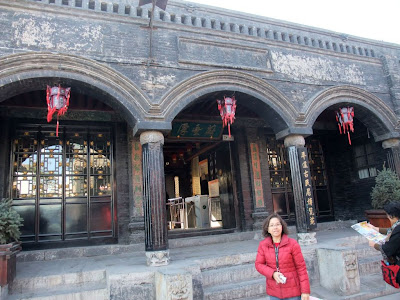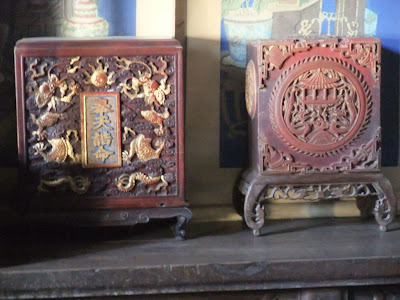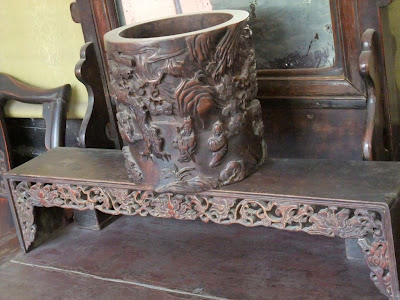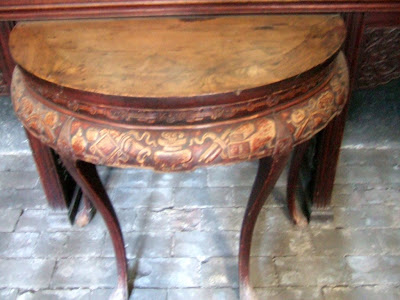
Pingyao ancient City is the birthplace of Jin Merchants (晋商). The Museum of ancient homes was the residence of the richest business man in the region. Hou Wan-Zhan (侯万瞻) was the 9th generation of Hou's clan from Jiexiu City (介休市) and he began to involve in business with his two sons, Sheng-siang (生祥) and Sheng-rui (生瑞) in Qing Dynasty. Within a period of 80 years from the reign of Emperor Kangxi (康熙) to Yong-zheng (雍正), they already owned 50 companies dealing with silk, medicine business, mechanizing products, printing and dyeing factory, money exchange shops, banks and other related trades. Their business covered to most of the big cities and ports in China and extended as far as to European Cities like Moscow. Hou gathered filthy wealth from his trades and built huge living complex with 368 courtyard houses over more than 10k sq.meter of land in their hometown with immaculate designs and luxurious decorations. The museum is the symbol home of a wealthy Jin Merchant from 17th-19th century.



The inner courtyards.



Most rooms and halls are renovated with beautiful carved wood at doors, windows and eaves.


Stone carvings are fabulous.



so, are the wood carvings at door frames and eaves.


View of some corners in the residence.



The relics including calligraphy, porcelain, wooden furniture, painted screen, carved altar and an old man clock, a foreign gift the owner obtained from overseas.




The gorgeous wood-carved beds with romantic colorful curtain.



Ancient mirrors of that era are definitely a precious relic.




An Emperor's orders are normally carried in these pretty little wood-carved containers.


Every piece of wood items used were beautifully carved with legendary stories or meaningful designs.


Amazing cabinets and cupboards.




The carvings at the rim of half moon table looks gorgeous.


Stone carved screen and praying altar.



The little altar was to worship the God of earth outside the main house.



Attractive stone carvings are at every corner in the living complex.










The underground space was a safe storage for golds and valuables.



A collection of international nation flags and a company's official share certificate of that time.



The display items enclosed in the glass box include various shapes teapot and pairs of little shoes that most women in the olden days wore and suffered for life.


Wooden carriages and sandal chair were some of the carriages used for goods and people in the past.



No comments:
Post a Comment